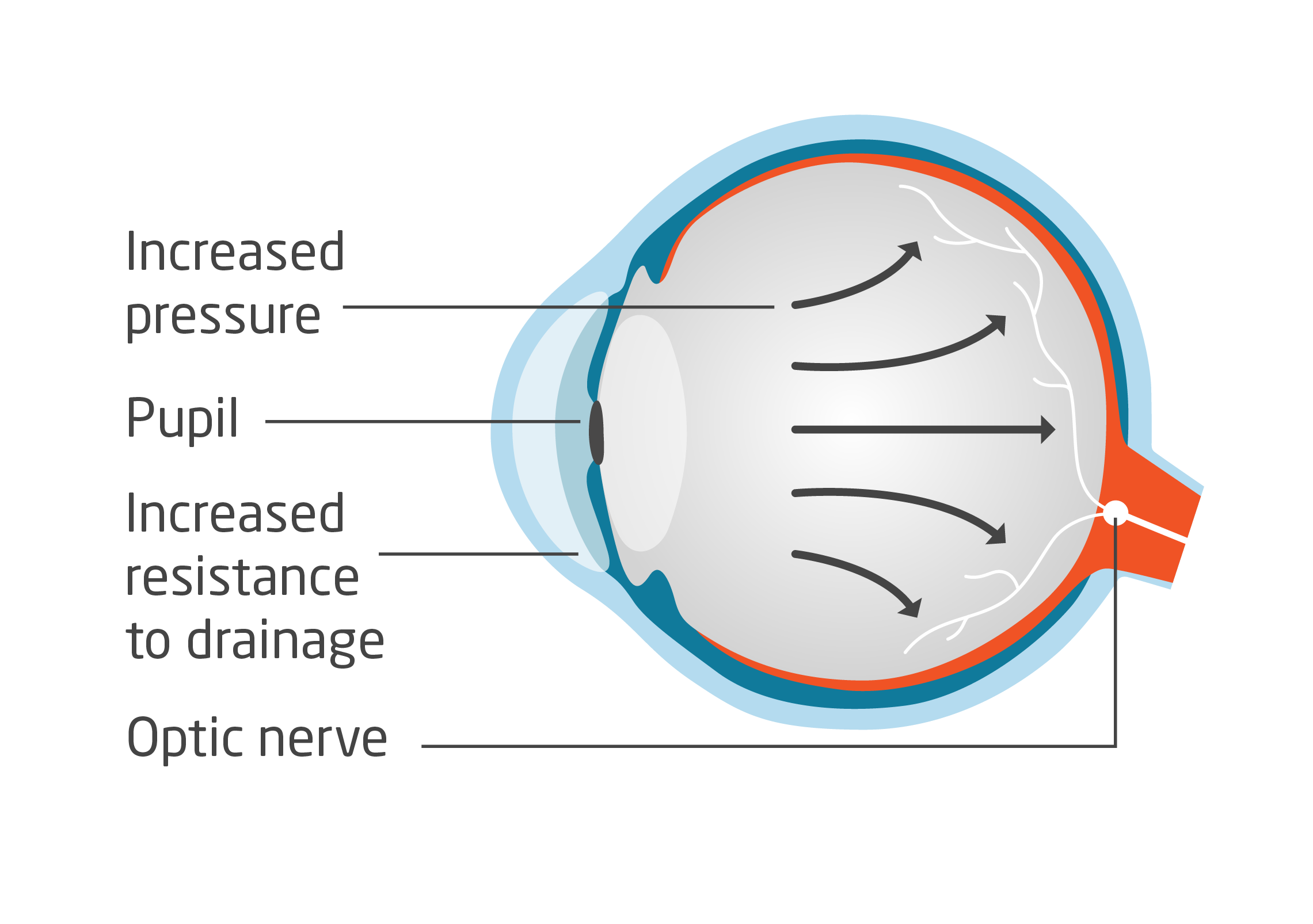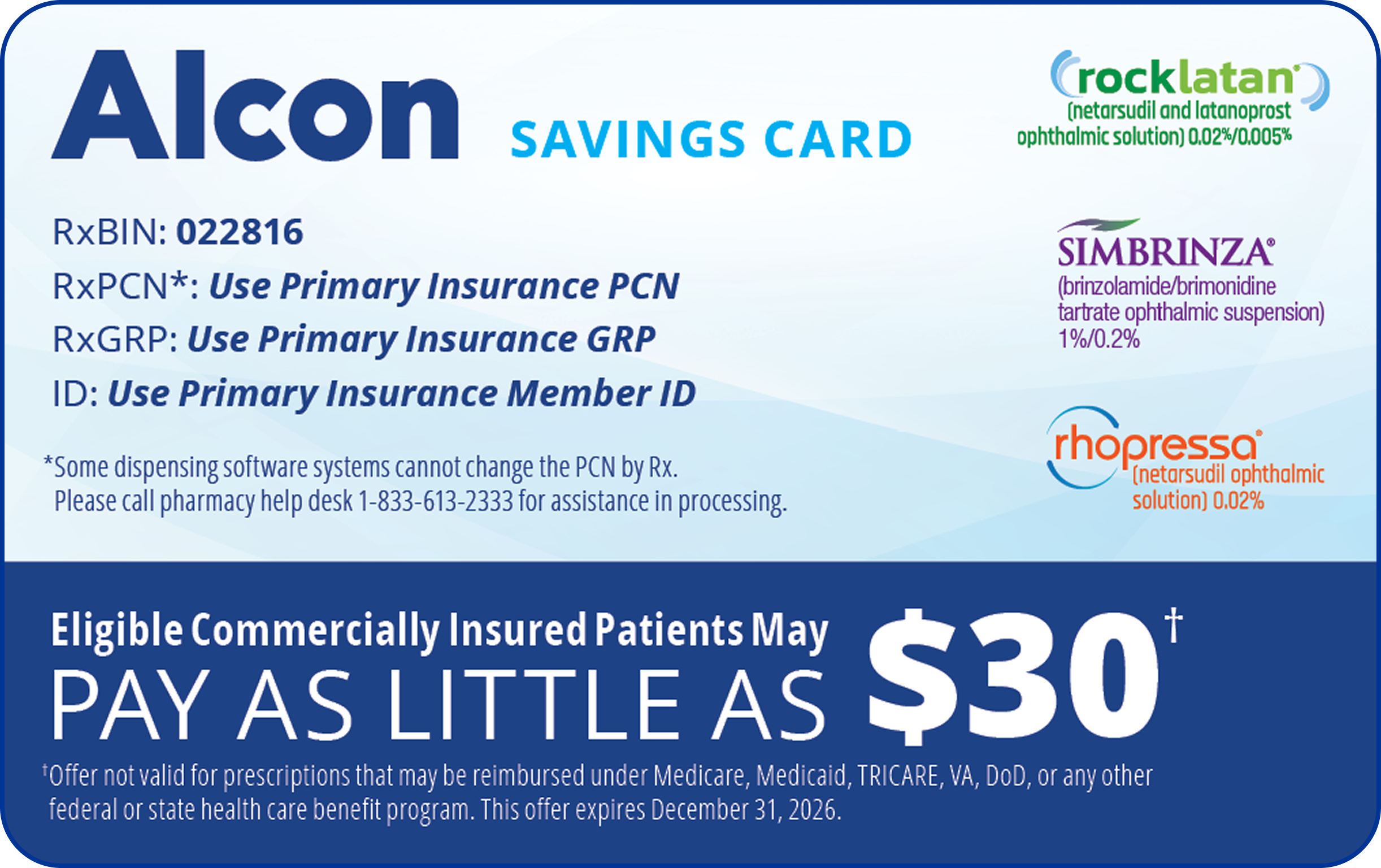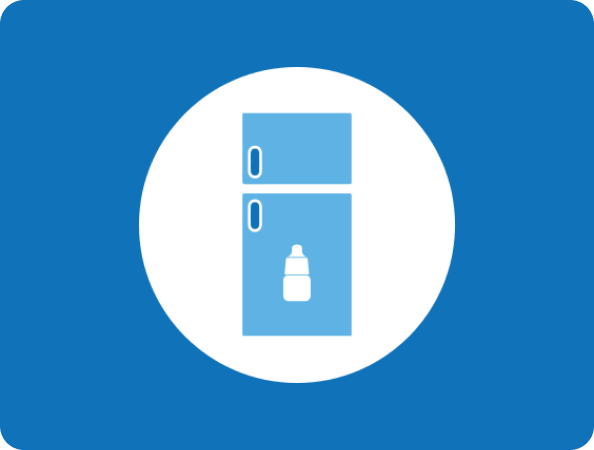TAKE CONTROL WITH RHOPRESSA®
(netarsudil ophthalmic solution) 0.02%
Alcon offers support to help you get the most from your RHOPRESSA® treatment.
INDICATION
What is RHOPRESSA®?
RHOPRESSA® (netarsudil ophthalmic solution) 0.02% is a prescription medicine to reduce high eye pressure (intraocular pressure, or IOP) in patients with open-angle glaucoma or ocular hypertension.
IMPORTANT SAFETY INFORMATION
- Avoid allowing the tip of the bottle to contact the eye, surrounding structures, fingers, or any other surface in order to minimize contamination of the solution. Serious damage to the eye and subsequent loss of vision may result from using contaminated solution.
- If you develop another ocular condition (e.g., trauma or infection, or decreased vision with or without eye pain), have ocular surgery, or develop any ocular side effects, particularly conjunctivitis and eyelid reactions, you should immediately seek your healthcare provider’s advice about continuing to use RHOPRESSA®.
- The preservative in RHOPRESSA®, benzalkonium chloride, may be absorbed by soft contact lenses. Contact lenses should be removed prior to instillation of RHOPRESSA®, but may be reinserted 15 minutes after instillation.
- If you are using more than one eyedrop, the drugs should be administered at least 5 minutes apart.
- The most common side effect of RHOPRESSA® in clinical trials was red eyes (53% of patients). Six percent of patients stopped taking RHOPRESSA® due to red eyes. Other common (approximately 20%) side effects were: small deposits on the outer surface of the eye, instillation site pain, and broken blood vessels on the white of the eye.
For additional information about RHOPRESSA®, talk to your healthcare provider and click here to see the full Prescribing Information.
You are encouraged to report negative side effects of prescription drugs to the FDA. Visit www.fda.gov/medwatch or call 1-800-FDA-1088.
©2025 Alcon Inc. 11/25 US-RHO-2500008





